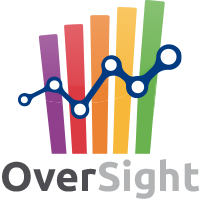
Overview
We’ve seen customers leverage AWS Awsome Cost Dashboards to successfully manage and optimize their AWS bill. For example, a security and data solutions company used the hourly compute visualizations (more on that below) within the Cost Intelligence Dashboard to reduce their overall Amazon EC2 compute spend by roughly $20k per month (or 8% of their overall Compute spend). An educational technology company in India saved $23K per month by identifying more right-sizing opportunities using the same compute visualizations in the dashboard. And a construction machinery and equipment company in the US saved $12K per month by using the storage visualizations to identify opportunities to adjust their storage retention policies.
When you first open Dashboard, you will see these 7 tabs: Billing Summary, Usage Cost Summary, Compute Summary, Storage Summary, RI/SP Summary, OPTICS Explorer, and MoM Pivot.
The Billing Summary tab is a generalized overview of two types of information: your invoiced spend and your amortized spend. Your invoiced spend is the sum of your previous month’s invoice, whereas your amortized spend is the cost of your usage of AWS that month including any fees (upfront and partial) paid for Reserved Instances of Savings Plan (even if they were paid in another account such as a payer account). You can use these visuals to change how the information is categorized (i.e. by account, service, charge type, region, product code, etc.) and see forecasts based on the results of a machine learning model using your previous spend data to predict your future cost.
This tab, and in particular the amortized spend graph, is useful for high-level or executive financial reporting mechanisms such as chargebacks and showbacks, since you can group the spend by any field available including your Cost Allocation Tags and Cost Categories. The Billing Summary is designed to remove a lot of work that is done manually today by customers saving you time.
The Usage Cost Summary tab is dedicated to only the cost associated with your usage, excluding fees, taxes, and marketplace purchases. This lets you focus on your overall usage of AWS and how it correlates or directly leads to your costs. Some key visuals on this tab include a top services cost mover analysis that helps you see what are the major changes happening month-over-month in terms of service usage and spend and an anomaly detection visual (uses Amazon QuickSight’s Anomaly Detection feature) that can alert you to spend that the machine learning thought was not part of normal usage.
This tab helps you stay on top of the usage trends across all of your accounts and catch anything that doesn’t meet or work towards your CFM goals. You can categorize visuals by account, cost category, tag, or other mappings to drive accountability for any spend or usage that needs attention.
Highlights
- Save hundreds of hours per year figuring out what is expecting your AWS costs, with powerful insights about your AWS costs No monthly fees but AWS resources created (Athena, Quicksight) Detect anomalies and drive actions to continuously optimize your environment
- Use all the power and intelligence of Quicksight Enterprise Does not depend on third-party solutions, 100% Native AWS it cost around 30-50 USD / month depending the size of account and Quicksight licenses
Details
Introducing multi-product solutions
You can now purchase comprehensive solutions tailored to use cases and industries.

Pricing
Custom pricing options
How can we make this page better?

Legal
Content disclaimer
Support
Vendor support
- Demo video: https://flexa.cloud/costdashdemo/
- Flexa Cloud Website: https://flexa.cloud/en/
- Two weeks support by our support tool
Software associated with this service
